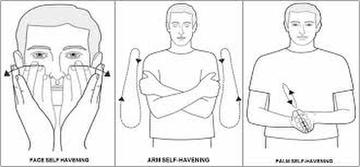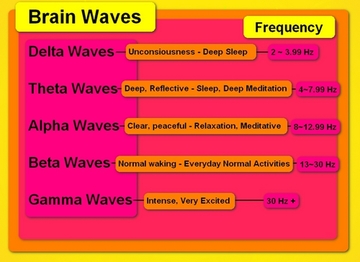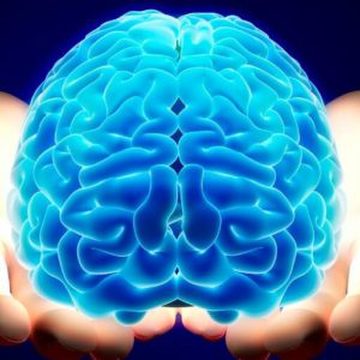Treating Trypophobia with Havening
Havening or the Amygdala Depotentiation Techniques (ADT) is a system of scientific procedures evolved through a decade of scientific research. Usually taking only minutes to perform, these new “psycho-sensory” procedures can help de-traumatize negative memories and phobias, as well as their negative effects. This new psychotherapy model was developed by Dr. Ron Ruden, who created an integrated system by applying cutting-edge laws of neuroscience. It was further researched and developed by his brother, Dr. Steven Ruden, to alter thought, mood, and behavior. They have shifted the focus from classic talking therapies and understanding of the patient’s past to patient’s emotional response. Following a set of simple steps, they have included sensory input in a form of a gentle touch. And voila, the revolutionary technique was born.

You can use havening to treat your trypophobia
Havening Process
Havening has significant empirical evidence and it successfully works on trauma sufferers and patients with phobias, traumatic memories, experiences, and events PTSD. But this technique is not just for trauma and negative past experiences; it is proving highly effective within couching work and personal development programs, leading to a balanced and calm state of mind and regaining self-confidence. The reason why it is also called Amygdala Depotentiation therapy lies in the fact that the process itself is performed and enhances the functioning of the amygdala, the integrative center in the brain responsible for emotions, emotional behavior, and motivation.
The process of Havening works by reducing or completely eliminating the negative emotional responses encoded in our brain which appears as a consequence of a very stressful situation or a trigger usually connected with phobias. As a result of the healing process, the patient develops a neutral or positive emotional response to a previously stressful situation or trigger.
Havening techniques
For decades, neuroscientists have tried to find out how our brain codes memories, phobias, and fears. One of the ways they use to discover it is by monitoring the brain activity when people are in hypnosis. Ruden has discovered that the knowledge which hypnotists have can be used to point out the brain parts which remain active while we are experiencing phobias, anxiety or stress. The core of the Havening techniques consists of tapping techniques, such as EFT and TFT, which Ruden learned from the famous hypnotist and personal development coach, Paul Mckenna. He discovered that Event Havening can help relieve stress and improve patient’s life performance by distracting him from stressful memories. Paul Mckenna explains: “I get people to think of the problem and focus their minds on it. Then I ask them to tap on different parts of their body, to use their eyes and touch the sides of their arms. These movements create a chemical reaction in the brain which undoes and breaks down the negativity. It disconnects the thought from the feeling.”
The therapy for traumatic events and phobias consists of:
- Activation of an emotional event by recalling the stressful memories, which in some cases can be avoided
- Havening touch which can be applied to different parts of the body, such as the arms, face, and palm. Ruden’s research found that physical touch sets off electrochemical signal to the brain in the form of Delta waves, very slow brain waves. When a patient feels threatened by something or experiences a high level of stress, the brain uses high-frequency Gama waves producing a wide variety of stress hormones like cortisol. This is what actually triggers our fight or flight response. In contrast to these Gama waves, Delta waves are the slowest brain waves which trigger hormones such as serotonin and oxytocin. The Havening techniques cause low-frequency waves activating an enzyme called calcineurin which reabsorbs the receptors back into the neuron. Once the process occurs in our brain for a certain memory, the change becomes permanent. The patient still remembers the traumatic events but he no longer has the same emotional or psychological reaction.
- Distraction techniques such as visualizing and counting. Distraction techniques serve as a prevention for any further re-experiencing of the phobia or stress. They also serve to create calmness and the sense of safety.
- The effect of this is scored on a scale called SUD (Subjective Units of Distress) scale so both the patient and the doctor have a measure of its effects.
These procedures are explained in detail in Ruden’s book “When the Past is Always Present”. The new techniques have caused a chain of reaction resulting in creating a completely new field of psychotherapy, Psychosensory therapy. The sensory input was further on researched through traditional Chinese medicine, acupuncture, etc.
Havening treatment
The Havening therapy achieves positive results that are permanent, sometimes the end result occurs in just minutes. This, of course, depends on the patient’s severity of symptoms as well as patient’s current state of mind. By producing a calm pleasant state of mind, it is quite similar to hypnosis. In contrast to hypnosis, the patient is conscious and fully aware of what is going on at the moment.
Havening can be used for:
- Emotional or psychological trauma (such as PTSD)
- Anxiety, and depression
- Fears, phobias, and panic attacks
- Substance abuse (but combined with other treatments and medications)
- Compulsions
- Emotions such as grief, the loss of a loved one, guilt, shame or anger
- Breakups and trauma experienced in current relationship or marriage
- Conversion disorder, chronic pain, and illnesses
- Building up self-esteem and confidence
- Visualisation and creativity
- Installing positive beliefs and coping mechanisms
- Focusing on and motivating yourself towards goals, initiating productive habits and reactions.
Types of Havening therapy

Your brain waves as they react to Trypohobia
Depending on the patient’s diagnosis, some Havening procedures are more generalized, while others work only on specific cases. The research team from King’s College London led by Paul McKenna recruited a group of 27 men and women who had reported having problems with work due to anxiety or depression. They were subjected to just one session of Havening, which consisted of a sensory input with distracting exercises such as thinking about going up the stairs or singing a happy song (Happy birthday). The lead researcher, Professor Neil Greenberg, said that: “Overall, we found that within this small sample there was a clear improvement on all mental health measures after the Havening intervention. Our data provide some preliminary evidence that Havening may be capable of rapidly improving depression, anxiety, and impaired function through a single session.” Using several standardized measures, the scientists, whose study was published in Health Science Journal, also concluded that for more severe illnesses multiple sessions need to be performed.
Havening therapy also includes several subtypes, and more are being developed instantly. Most common types are:
– Event Havening for psychological traumas such as phobias, traumatic memories, syndromes, etc.
– Transpirational Havening for creating new positive psychological states from negative emotions
– Outcome Havening for building up self-confidence, achieving new goals, improving the quality of life, etc.
Havening and trypophobia

Your brain’s response to trypophobia
Modern psychotherapy offers a lot of powerful tools to treat different kinds of phobias, such as Trypophobia. Trypophobes go through the process of Cognitive-Behavioral Therapy, Exposure Therapy, Desensitization to defeat everyday symptoms and improve the quality of life. The fear of the clusters of holes can be triggered just by looking at these specific patterns and have a lasting impact on the patient’s memories and emotional response encoded in the amygdala. A rather new branch of therapy, Havening, has opened new possibilities to treat this kind of phobia. So far, practical evidence with over 10,000 patients suffering from different phobias has suggested that these methods can have a much stronger effect than traditional techniques of psychotherapy. Using several procedures such as tapping and stroking the arms, as well as a series of eye movements. Trypophobes could perform a self-healing process to break down the negative emotions triggered by the clusters of holes and get rid of Trypophobic symptoms. Dr. Mckenna feels that “Everyone has something that throws them off balance,” and to get rid off the Trypophobic symptoms the patient learns how to disconnect the negative thoughts produced by triggers such as lotus seed pod, Surinam tod or any other cluster patterns from emotions which are brain produced as a consequence of that negative thought. If reasoning and rationalizing are not enough to diminish the negative thoughts, techniques such as humming or counting are applied. Treating of the symptoms such as itching, panic attacks, increased heart rate, etc need to be performed on a neurological level, by activating different areas of the brain linked to humming or counting.
Some of the steps of self-healing through the Havening technique may include:
– Close your eyes and think of Trypophobic patterns for half a minute and scale it from 1 to 10
– Open your eyes and immediately distract yourself by applying the Havening Touch:
- Arm Havening: Cross your arms and stroke with your hands down from your shoulders to your elbows
- Hand Havening: Rub your palms against each other.
- Face Havening: Apply the Havening touch to your forehead
– Start humming a melody you like or counting the numbers backward.
– Close your eyes and then open it looking from the very far right to the very far left – and back, (move your eyes in circles). Repeat this at least 5 times.
– Rescale the emotional response from 1 to 10 until the scale falls at least at 3.
The process needs to be repeated several times and you need to set up realistic goals. And remember, the goal is not the absence of any feeling, but a normal reaction (in the case of Trypophobia patterns disgust is a normal reaction) and being able to move on and let it go.
References
https://www.mirror.co.uk/news/uk-news/paul-mckenna-can-make-you-1883169
http://www.dailymail.co.uk/sciencetech/article-3385074/How-rubbing-arms-banish-bad-memories-Havening-technique-helps-permanently-rid-distressing-thoughts.html
https://www.psychologytoday.com/us/blog/brain-myths/201305/can-the-new-havening-technique-really-cure-trauma-and-fear
http://www.positivehealth.com/article/nlp/havening-a-new-way-to-heal/
https://nba.uth.tmc.edu/neuroscience/s4/chapter06.html

